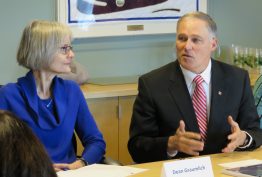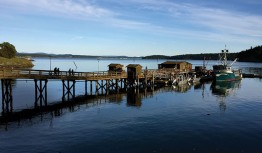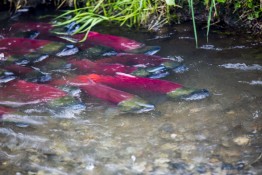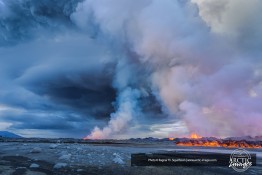From the Conference of Parties in Paris to the University of Washington, Governor Jay Inslee is leading the climate conversation forward in Washington.
Read more and see the video from King 5 »The dream lab: UW's Friday Harbor Laboratories
Make no mistake, the sea is changing. Warming waters are causing some organisms to become more abundant, while undermining others’ ability to fight off disease. Invasive species, overfishing and mutated diseases are all signs and sources of changes to come. Increased acidity, whether from human activities like runoff and carbon emissions or from the upwelling of deeper waters, affects the ability of clams, oysters and fish to form shells and skeletons.
Read more in Columns »Swim record: Ray Hilborn and the Alaska Salmon Program
Ray Hilborn watched with satisfaction last summer as the near-record sockeye salmon run he and his UW colleagues had forecasted finally flooded from Bristol Bay up through the lakes and creeks of southwest Alaska. Their prediction? Forty-nine million sockeye—up more than 50 percent from the average of 32 million. When the season started slowly Hilborn got antsy, recalling the 1995 run, in which “there was nothing, nothing, nothing and people started to despair,” says the aquatic and fishery sciences professor.
Read more in Columns »Seattle's Ballard is ripe for green-space restoration, new report says
When you look at a map of Ballard, something surprising might jump out — there are very few public natural areas for residents to enjoy. The Seattle neighborhood has its fair share of single-family backyards and gardens, but for the increasing number of residents who live in apartments or condos in Ballard’s downtown core, there aren’t many public green areas. A University of Washington graduate student saw green-starved Ballard as an opportunity to call attention to areas in the neighborhood that have restoration potential.
Read more at UW Today »Iceland volcano’s eruption shows how sulfur particles influence clouds
It has long been suspected that sulfur emissions can brighten clouds. Water droplets tend to clump around particles of sulfuric acid, causing smaller droplets that form brighter, more reflective clouds. But while humans have pumped sulfur into Earth’s atmosphere since the Industrial Revolution, it’s been hard to measure how this affects the clouds above. New University of Washington research uses a huge volcanic eruption in Iceland to measure the change.
Read more at UW Today »





